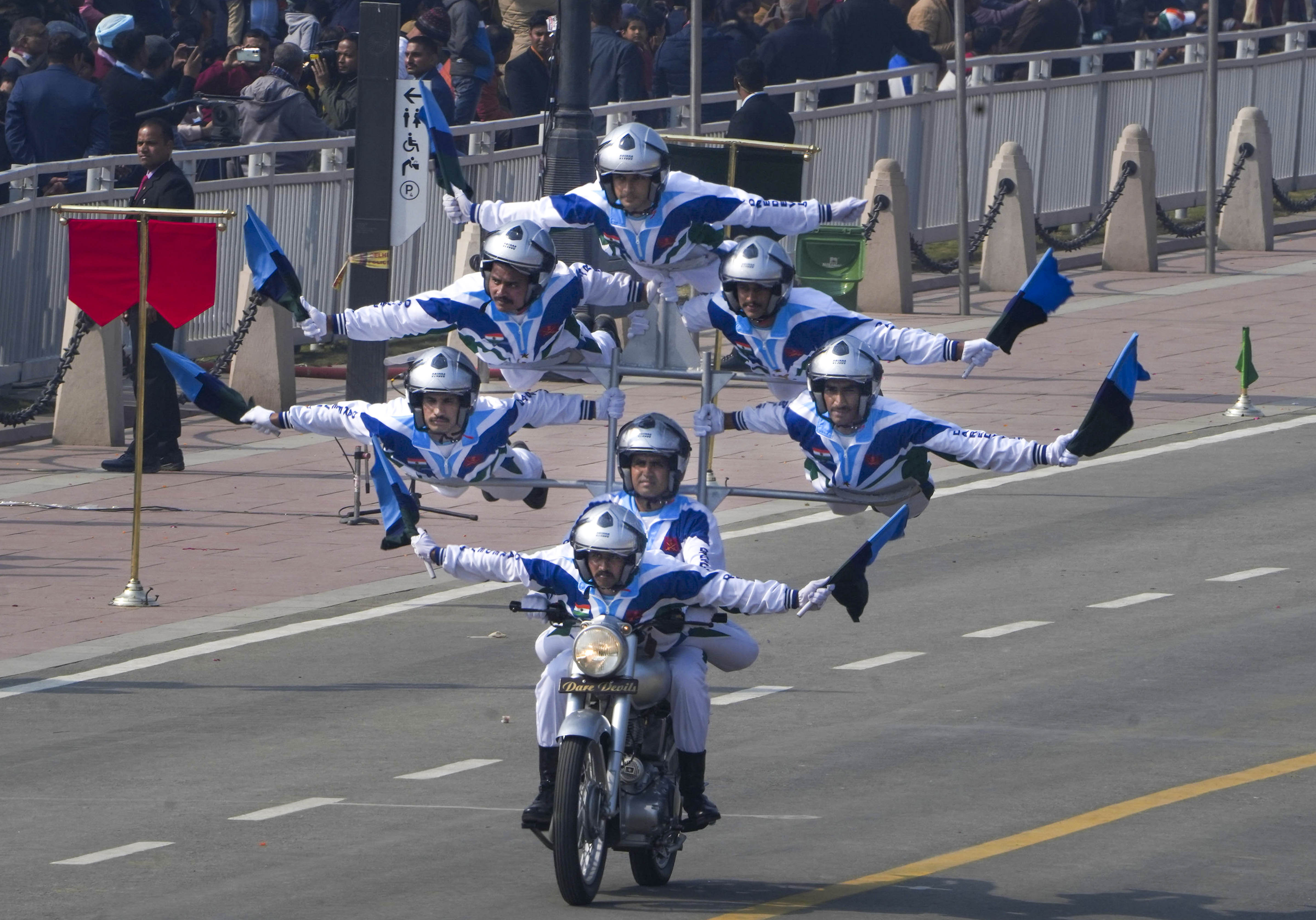SOURCE: AFI


For decades, the Motorcycle Display Team of the Indian Army has been a cherished part of the Republic Day Parades, showcasing a blend of skill, coordination, and daring stunts. Many of us grew up in awe of these performances, which have become a nostalgic symbol of national pride. However, as India ascends on the global stage, it is time to reconsider the relevance and image projected by this tradition.
In today’s world, where military prowess is increasingly defined by technological advancements, strategic capabilities, and modern warfare tactics, the motorcycle stunts appear anachronistic. They harken back to an era where such displays were a common way to demonstrate discipline and coordination. However, as India aims to project itself as a rising global power with a focus on innovation and modernity, these stunts may send the wrong message about the priorities and image of the Indian Army.
The tradition of motorcycle display teams is not unique to India; it has roots in the British Army era. Notably, even England’s famous Royal Signals Motorcycle Display Team, known as the White Helmets, gave its final performance in 2017. The disbanding of such teams reflects a broader shift in how modern militaries choose to represent themselves. No other contemporary army performs such stunts, underscoring the growing perception that these displays are outdated and not reflective of current military capabilities.
As the Indian Army continues to modernize its arsenal and adopt cutting-edge technologies, it should also update its public image. Displaying advanced equipment, tactical demonstrations, and technological prowess would better represent the Army’s current state and future aspirations.
India’s rise on the global stage brings with it a need to align with international standards of military representation. The motorcycle stunts, while impressive, do not align with the image of a sophisticated and technologically advanced military force.
The time, effort, and resources invested in training for these stunts could be redirected towards more strategically beneficial training programs. Enhancing combat readiness and technological skills should take precedence.
While nostalgia has its place, traditions should evolve to stay relevant. The Republic Day Parade can continue to honor the bravery and discipline of the Indian Army through displays that resonate with contemporary values and aspirations.